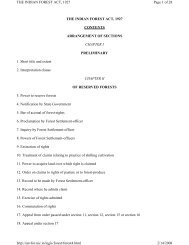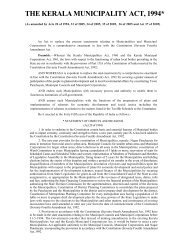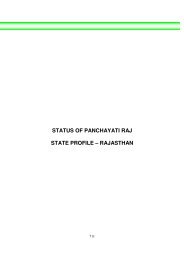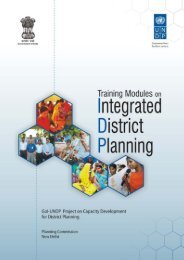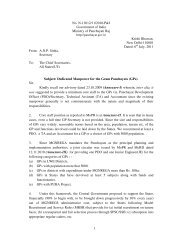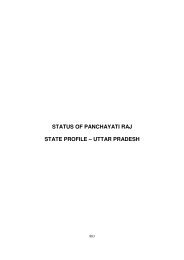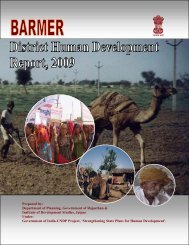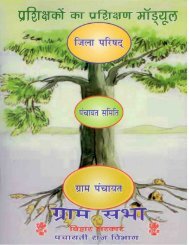Supaul Bihar Annual District Plan 2011-12 - nrcddp
Supaul Bihar Annual District Plan 2011-12 - nrcddp
Supaul Bihar Annual District Plan 2011-12 - nrcddp
Create successful ePaper yourself
Turn your PDF publications into a flip-book with our unique Google optimized e-Paper software.
CHAPTER VI<br />
TRIBAL SUB PLAN (TSP): <strong>2011</strong> -<strong>12</strong><br />
TRIBAL SUB PLAN<br />
INTRODUCTION:<br />
The tribal population of the district is 5219 constituting 0.3 % of the total population of the district. Out of<br />
total Scheduled Tribes (ST) population in the State, 99% reside in the rural areas. Maximum percentage of ST is<br />
in the block of Chattapur, whereas two blocks Pipra and Saraigarh Bhaptiyahi has no ST population.<br />
As per 2001 census, majority of the workers in tribal communities are agricultural labourer. Most of the<br />
cultivators among the Scheduled Tribes are marginal farmers, share croppers and small farmers. The literacy<br />
among the STs is 26.9 % against the overall literacy rate of 37.3% as per 2001 Census. The tribal male and female<br />
literacy rates are41.10% and <strong>12</strong>.00%.<br />
Their economy is generally substance and non specialized. They are generally in a state of social, economic<br />
and educational backwardness. The tribal sub plan strategy has been adopted since the beginning of the Fifth Five<br />
Year plan (1974 75).TSPis a strategic policy initiative to secure overall development of the STs and to remove all<br />
socio economic and educational disparities between them and the rest of the population. The Tribal Sub plan<br />
(TSP) approach envisages integrated development of the<br />
Tribal areas, wherein all programmes irrespective of their<br />
sources of funding operate in unison to achieve the common<br />
goal of bringing the area at par with the rest of the state<br />
and to improve the quality of life of the tribal.<br />
• India<br />
The original approach was oriented towards taking<br />
B<strong>Supaul</strong><br />
up family oriented income generating schemes in the field<br />
of agriculture, horticulture, animal husbandry, elimination<br />
of exploitation, human resource development programmes<br />
% of Scheduled Caste % of Scheduled Tribe<br />
through education and training programmes and<br />
infrastructure development programmes. This tribal development approach has now been reoriented to cover<br />
employment cum income generation activities and development of infrastructure incidental thereof.<br />
OBJECTIVES:<br />
The objectives of the TSP are basically of two folds i.e. (i) socio economic development of the Scheduled<br />
Tribes and (ii) protection of tribal against exploitation. Some of the broad objectives of the Eleventh five Year plan<br />
under TSP are as follows:<br />
• <strong>Bihar</strong>




